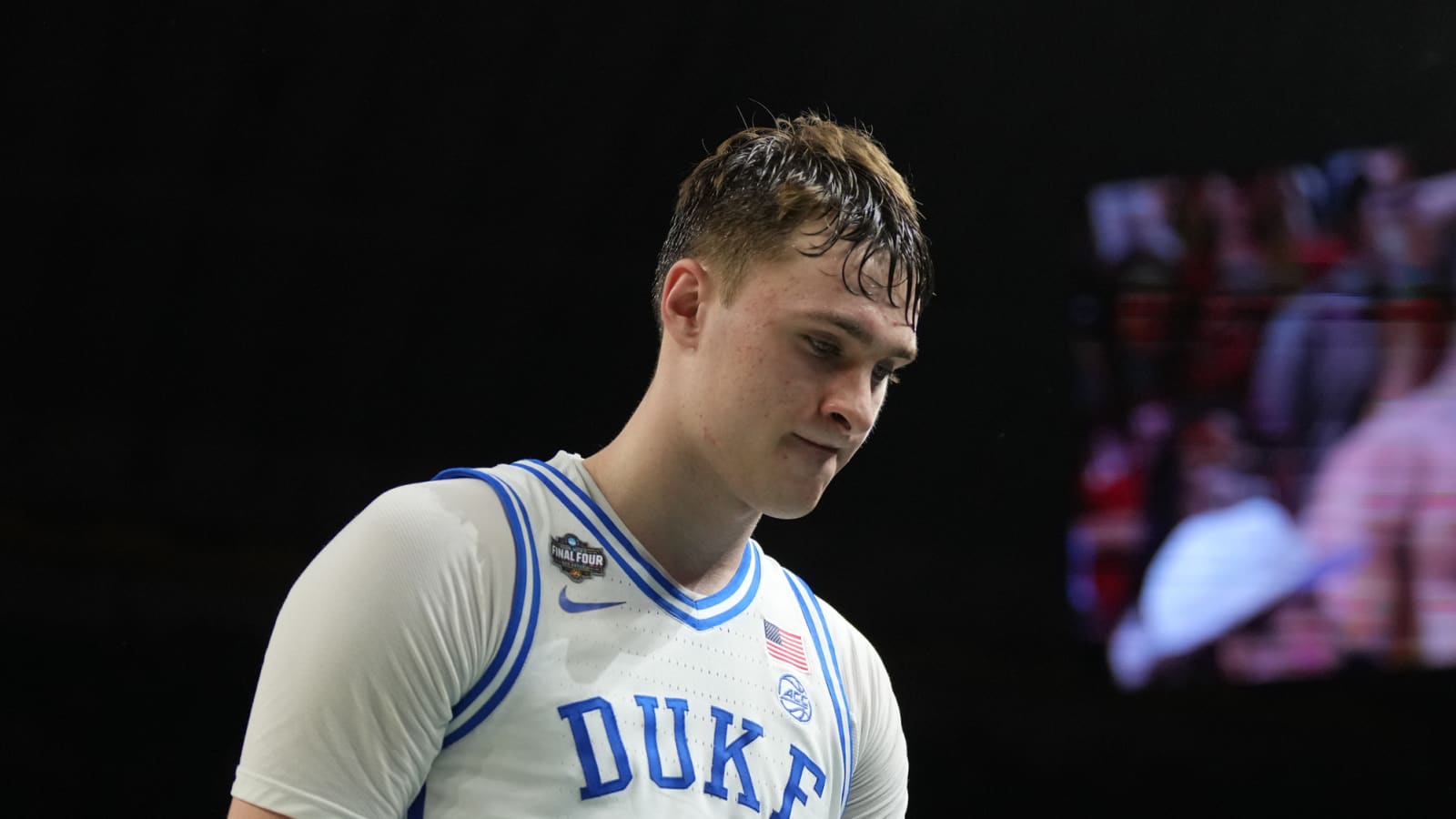
At just 18 years old, Cooper Flagg has taken the college basketball scene by storm.
Currently a frontrunner for the Naismith Player of the Year Award and projected first overall pick in the NBA draft, Flagg has been one of the most dominant players in recent college basketball history. Since KenPom began rating individual seasons in 2001, the highest-rated season of all time came from Frank Kaminsky in 2015 with a player rating of 2.794. As of March 5, Flagg holds a rating of 2.910.
But how does this translate to success in the NBA? It’s not rare that the National POTY in college doesn’t have the same success in the NBA. Luka Garza, Oscar Tshiebwe, Frank Mason, and Kaminsky are all recent examples of POTY winners who weren’t great in the league.
This isn’t saying it can’t happen, however. Recent winners like Jalen Brunson, Zion Williamson, Kevin Durant, and Anthony Davis are all stars in the NBA.
So what does this mean for Flagg? Is he destined for greatness? Will he be another college star turned bust?
Instead of trying to label his career before it happens, let’s look at some realistic NBA player comparisons to get a better sense of the player Flagg “could” be.
Jayson Tatum (F – Boston Celtics)
While comparing Flagg to a current NBA superstar may seem ambitious, there are many similarities between Flagg and Tatum. To start, both players were athletic forwards who were “the guy” for a year at Duke University.
In their time at Duke, Flagg has put up slightly better overall numbers.
- Tatum: 16.8 points, 7.3 rebounds, 2.1 assists, 45.2% FG, 34.2% 3FG, and a 4.1 win share
- Flagg: 19.2 points, 7.5 rebounds, 4.2 assists, 48.1% FG, 38.5% 3FG, and an 8.4 win share
Looking past just the stats, it’s not hard to see similarities in Flagg and Tatum’s play style, both at Duke and in the NBA. Despite being 6-foot-8 and 6-foot-9 and around 210 pounds respectively, both are the primary ball handlers for their team. They are each three-level scorers who can play both inside and out, making them a matchup nightmare for defenses. Put a guard on them, and they will punish you in the paint. Put a big man on them, and they will take you off the dribble and create separation for a jump shot.
One glaring difference, however, is where they get the majority of their points. While Flagg is a capable outside shooter, he attempts just 3.6 threes per game. A majority of his shots come in the mid-range or inside with his back to the basket. On the other hand, Tatum has averaged 7.1 attempts from three per game for his career.
What’s interesting to note is that when Tatum first came into the NBA, he attempted just 3.45 threes in his first two seasons. As the league has adjusted to a faster-paced style of play, the three-point shot rate has risen throughout. As Flagg adjusts to the NBA’s style, we can likely expect his attempts to rise per game as well.
Outside of just scoring, both are great at seeing the floor and creating opportunities for teammates. While in college, this wasn’t a strength of Tatum’s, he has developed into a 5.9 assists-per-game player. As for Flagg, it’s a great sign that this is already a strong suit in his game. Defenses aren’t able to help off or double-team them when there’s always the threat of finding an open teammate.
Neither is a slouch on defense, either. While Tatum excels primarily as an on-ball perimeter defender, Flagg has been an elite rim protector at Duke.
From their size, scoring, passing, ball handling, and defensive abilities, comparing Flagg to one of the NBA’s best doesn’t seem as far-fetched as it once did.
Paolo Banchero (F – Orlando Magic)
Another Duke Blue Devil, Paolo Banchero, is an athletic point-forward who does it all for his team.
Like Tatum and Flagg, Banchero put up very comparable stats while at Duke: 17.2 points, 7.8 rebounds, 3.2 assists, 47.8% FG, 33.8% 3FG, and a 6.1 win share.
The biggest difference between him and Flagg, however, is size. Flagg comes in at 6-foot-9 and 210 pounds, while Banchero measures 6-foot-10 and weighs 250 pounds. This results in a more inside-driven style of play, which despite his weight, is where Flagg prefers to do a majority of his damage.
However, much like Tatum, as Banchero has gotten adjusted to the NBA, his three-point attempts per game has risen from 4.0 in his rookie season to 5.9 this season. Unlike Tatum though, Banchero still does a bulk of his work inside the 3-point line.
Similar to Flagg, Banchero is very comfortable in the mid-range game. Even dating back to his college days, Banchero’s ability to stop on a dime and make a 10-to-12 foot jump shot is what makes him such a lethal offensive player.
While he may not be the superstar that Tatum is, if Flagg were able to turn into the kind of player Banchero is, while adding in his defensive upside, he would still be one of the most dangerous players in the NBA.
Franz Wagner (F – Orlando Magic)
Paired with Banchero in Orlando, Franz Wagner has blossomed into the perfect complementary scorer. Now in year four, Wagner is averaging a career-high 24.2 points per game.
Like Banchero, Wagner does most of his work inside the three-point line. He isn’t the strongest outside shooter. Wagner’s go-to is working downhill off ball screens, either getting all the way to the rim or working in the mid-range. He is also a very willing passer, highlighted by his 4.8 assists per game average this season.
In college, we’ve seen Flagg be very comfortable in ball screen situations, particularly with fellow freshman big man Khaman Maluach. If Flagg continues to prefer working inside, a Wagner-type offensive player isn’t out of the question.
The main difference between them is that Flagg prefers playing with his back to the basket more than Wagner does. This isn’t to say he isn’t capable, but it isn’t a focal point of Wagner’s offensive game. Flagg is also more of a rim protector and overall defender than Wagner, despite their similar frames.
The reality is that not every number one overall pick is the next LeBron James or Kevin Durant. If Flagg develops into an efficient and dangerous secondary scorer with high-defensive upside, whatever team drafts him should be more than satisfied.
More must-reads:
- College football fan proposes genius trade between conferences
- Astros quickly designate veteran righty for assignment
- The 'MLB ballpark names' quiz
Breaking News
Trending News
Customize Your Newsletter
 +
+
Get the latest news and rumors, customized to your favorite sports and teams. Emailed daily. Always free!








